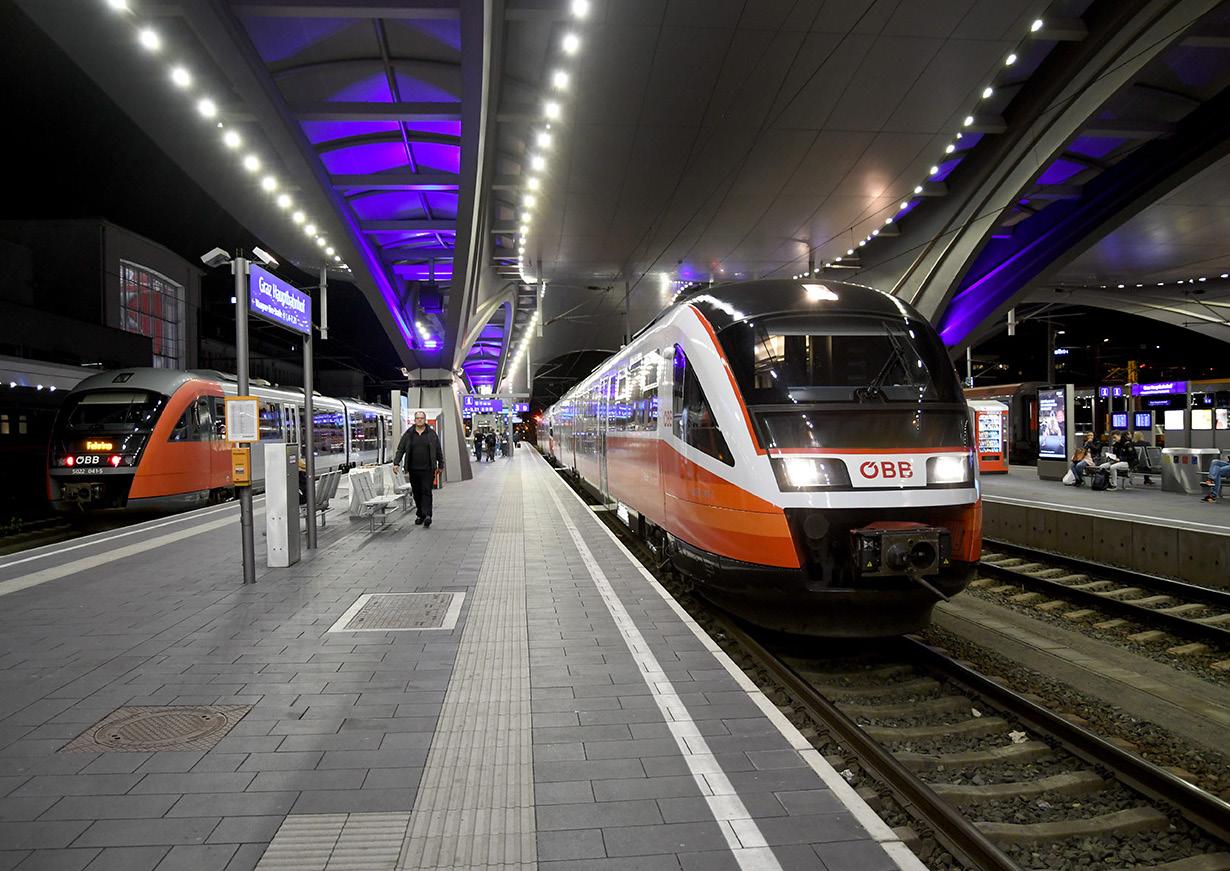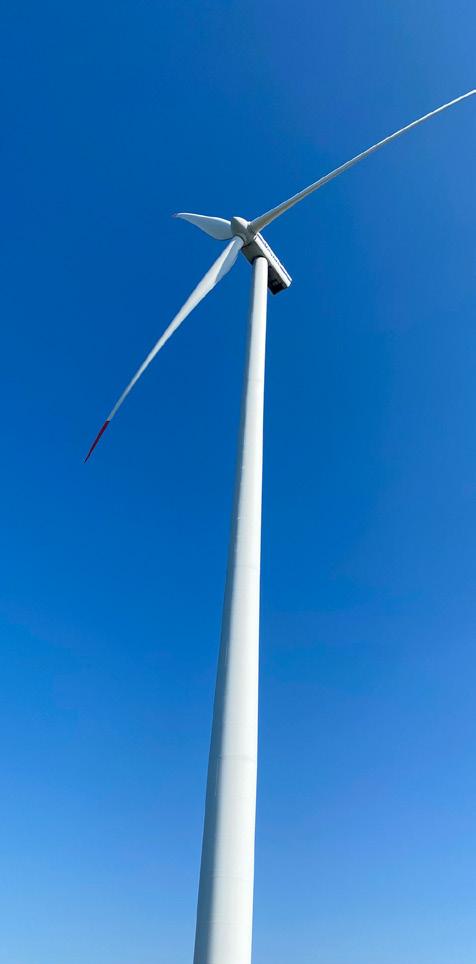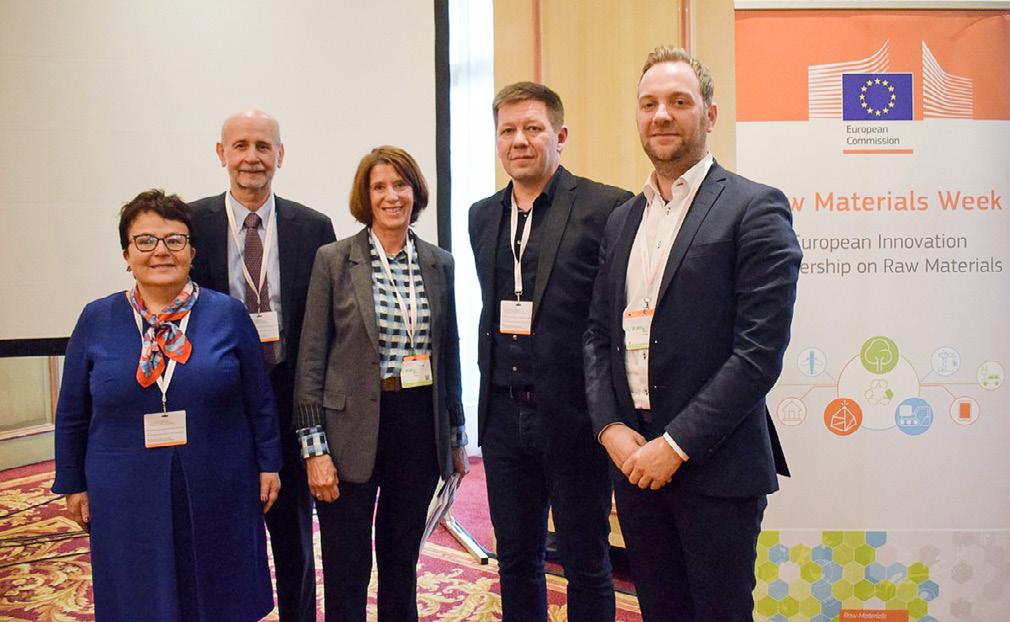
9 minute read
Securing European Supply Chains
Securing European Supply Chains
Expected Rise in DEMAND for Raw Materials
— The demand for raw materials is continuously increasing in
Europe and globally — By increasing mineral domestic production, Europe becomes less dependent and improves its sustainable supply chain

page 11 of 35 Table of Contents The global population is forecast to reach 9 billion by 2030, including 3 billion new middle-class consumers All of these wish to secure their livelihoods and, if possible, increase their standards of living This will increase demand for products and their related raw materials In order to meet this challenge and to satisfy it with sustainably sourced raw materials, a shift towards more resource efficient production, increased recovery and reprocessing along the value chains and a the end of life of products will be important Latest developments have also illustrated how important it is to have resilient supply chains, and therefore Europe’s economy also needs increased supply of raw materials from European sources and needs to reduce its dependencies on imports
Mineral Raw Materials in modern society are the lifeblood of the economy. They are the basis for many sectors:
Agriculture
Electronics Construction
Energy IT
Chemistry
Manufacturing Medicine
The raw materials value chain
The entire loop represents the circular economy.
You can only reuse and recycle a material once it has been turned from a resource into a material.
PRIMARY RESOURCES
EXPLORATION
MINING
COLLECTION RECYCLING
PROCESSING
USE, REUSE
RAW MATERIALS
PRODUCTION
DESIGNSubstitution of Raw Materials
Source: EIT Raw Materials
Raw materials are the key enablers of many important policies that will shape our future, such as adaptation to and mitigation of the climate change challenges.
Securing European Supply Chains
page 12 of 35 Table of Contents Euromines Working with the Whole EU Industrial Value Chain

In November 2019 Industry4Europe, a coalition of 149 sector Associations representing the diversity of the EU’s industrial base and led by UNIFE, The European Rail Supply Industry Association, published its Joint paper 'A longterm strategy for Europe's industrial future: from words to action' Through cross-sectoral recommendations, the Industry4Europe coalition contributes to the future EU industrial strategy announced by European Commission President Ursula von der Leyen
The joint position is taken forward into the discussions on the economic recovery strategy following the Covid-19 lock-down in 2020 and represents concrete industrial policy recommendations in seven priority fields; business-friendly policy environment, sustainability at business core, upgraded skills and training, enhanced research and innovation, investment and improved access to finance, reinforcement of the European Single Market and strengthened trade and international market access
Euromines has been a member of the Industry4EU coalition from the beginning and has been very active in developing its positions in many of these areas, and lately in particular with regard to sustainability questions and skills and training issues
In 2019 the Czech Mining Association and Euromines took the opportunity to contribute to the debate by organising a conference specifically on raw materials and its value chains

Securing European Supply Chains
page 13 of 35 Table of Contents Sustainable Mining for Sustainable Development Conference, November 2019, Brno, Czech Republic

More than 110 experts met in Brno, Czech Republic, to participate in this International Conference on Sustainable Mining organised by Těžební Unie (Czech Mining Association) in cooperation with Euromines, under the auspices of the Ministry of Industry and Trade of the Czech Republic and the Czech Mining Authority
Stakeholders representing industry, policy makers and governmental institutions, regional authorities, NGOs, the innovation community and universities discussed growing public and political urgency around sustainability that has resulted in wide-ranging and ambitious global policy measures Policies discussed were amongst others the raw materials contributions to the UN Sustainable Development Goals, the Framework Convention on Climate Change (including the Paris Agreement) as well as the European Commission’s strategic long-term vision for a prosperous, modern, competitive and climate-neutral economy by 2050 laid down in its Clean Planet for All Communication published in November 2018 as well as its updated Action plan for the Circular Economy Conference participants discussed existing and future contributions and solutions the raw materials sector can deliver to achieve these policy goals through state-of-the-art technologies

Securing European Supply Chains
page 14 of 35 Table of Contents Energy-Intensive Industries Enabling a Climate-Neutral, Circular Economy by 2050

Following an intensive consultation with 11 industrial sectors, the 2050 Masterplan for energy intensive industries was published in November 2019 The recommendations include actions that could provide the right market signals to attract new investments and assist companies implementing cost-effective solutions towards climate-neutrality They also focus on the need to ensure a just transition, underline the importance of equipping workers with the right skills for the future and of helping communities that depend on these industries to manage the transition In particular, the recommendations highlight key success factors under three main priorities:
— Creating markets for climate-neutral and circular products, — Developing large-scale pilot projects on clean technologies, — Switching to alternative climate-neutral energy and feedstock sources
Key for all of these sectors is of course the secure and sustainable supply of raw materials

Securing European Supply Chains
Availability of Europe’s RESOURCES
— Europe still has rich mineral resources which can be mined sustainably
Standing at the beginning of most value chains, the sector is a critical supplier of essential materials and products and therefore generates added value and growth through employment, economic growth, development, innovation and generating trade

page 15 of 35 Table of Contents The Mineral Raw Material Industry’s Contribution to Achieving Carbon Neutrality Goals
The European Commission’s strategic long-term vision 'A Clean Planet for all' as published on 28 November 2018 outlines Europe’s transition towards a climate-neutral economy by 2050 in line with the objectives of the Paris Agreement In this context, it invited all EU institutions, businesses and the entire European society to join forces for a sustainable, climate-neutral economy
The European Commission underlined the importance of continuing European exploration and extraction: "Raw materials are indispensable enablers for carbon-neutral solutions in all sectors of the economy Given the scale of fast-growing material demand, primary raw materials will continue to provide a large part of the demand "
The European mineral raw material industry plays a critical role in underpinning economic growth and reaching a low carbon, sustainable economy The development of mineral resources is a pillar for many national economies, in terms of contribution to gross domestic product, foreign direct investment, tax and royalty revenues as well as other governmental revenues Modern extraction and processing of minerals and metals has brought huge benefits to society while reducing pressures on the environment, addressing green-house gas emissions, tackling pollution, minimising waste and improving efficiency in the use of natural resources Even more, the mineral industry will continue to enable downstream sectors to put their own improvements into practice Euromines illustrated this by providing best case practices in its 2019 brochures "Providing Metals and Minerals for Carbon Neutrality" and "The European Magnesite/Magnesia Industry: enabler in the transition to a low carbon economy" The sector’s contribution to mitigating climate change

Mineral raw materials are indispensable enablers of carbon-neutral solutions in a wide variety of economic sectors As the first segment of most value chains, the minerals sector is a supplier of critical and essential materials and products and generates added value In recent years the mineral raw materials industry has continuously optimised its productivity and energy efficiency and is still implementing new solutions toward further reducing energy consumption/unit and reducing the carbon-intensity of its operations wherever possible
Securing European Supply Chains
page 16 of 35 Table of Contents European Minerals Day 2019

Every two years, European Minerals Day allows the European public to explore the world of minerals and its companies It is a pan-European awareness initiative by the European minerals sector and related organisations
Events marking the 7th European Minerals Day took place between May and November of 2019, with most activities concentrated between 20–22 September During this period, 128 events at 109 sites took place across 22 countries Between 10 000 and 15 000 visitors engaged with the initiative In 2019, a significant number of visitors were children Minerals exhibitions in museums as well as sustainable mining conferences in universities were hosted The European Minerals Day’s closing event took place on 21 November during Europe’s Raw Materials Week
Euromines and its members actively participated in welcoming many visitors


Securing European Supply Chains

The Briefcase Project explores innovative ways to attract the general public to minerals and mining It aims to transform issues around mining – such as conflict minerals, sustainability and environmental consequences of mining – into more relatable and tangible to the everyday person, namely our young students Using a number of innovative methods, it teaches students to identify minerals they use in their everyday life and encourages them to reflect on the problems and topics surrounding the mining industry
Euromines is one of the partners in this EIT Raw Materials Project that focuses on education and aims to increase public knowledge and awareness about minerals and metals, along with their relevance and importance for the course of our society
In 2019 our project partners created five new thematic Briefcases: Gold, Cobalt, Tin, Platinum and Secondary Raw Materials, and the project team is currently working on developing a 3D/Augmented Reality Briefcase Tool, which aims to appeal to older students, as well as the general public, and prompt them to take deeper interest in mining by visiting places such as museums and science centres
The game of "The Briefcase of mineral applications" aims to familiarise the player with minerals that are used in the manufacture of everyday objects Given the era of growing prevalence of online teaching and learning, we believe tools such as this one could prove to be effective and beneficial for the education of young people After all, it is now that their sense of responsibility and consciousness is forming Our main objective is to point out the indispensability of minerals and mining, focusing on their wide range of uses, as well as their consequences for society and the environment Our project addresses production systems, sustainability questions around mining operations, and the importance of the consumer’s behaviour, namely as it pertains to consumption and approach to activities such as recycling
3D



